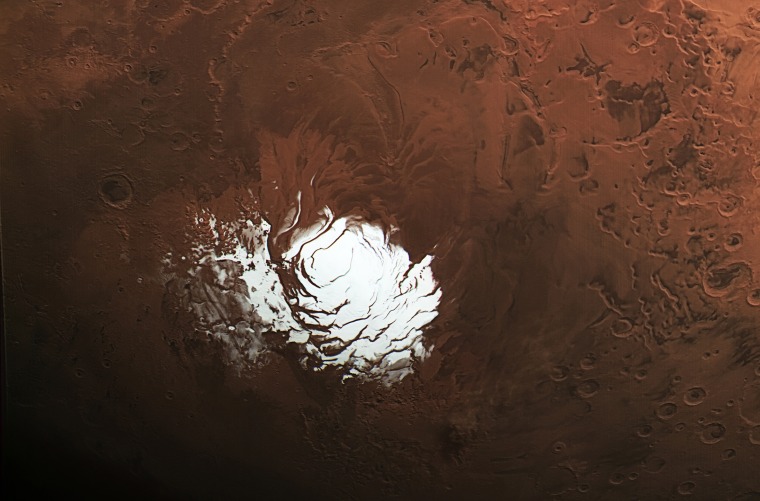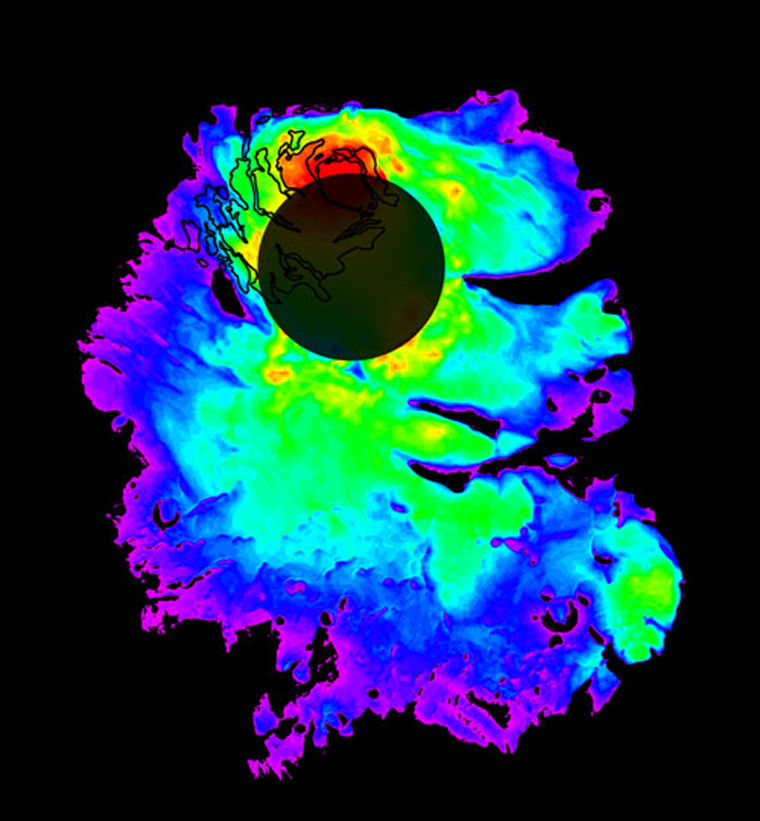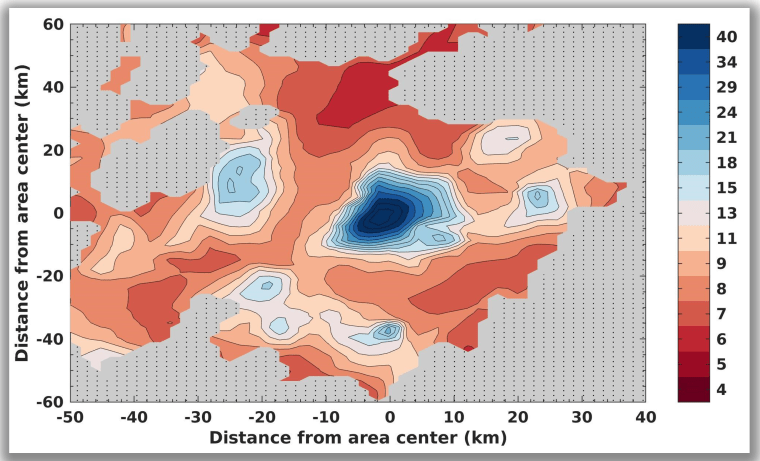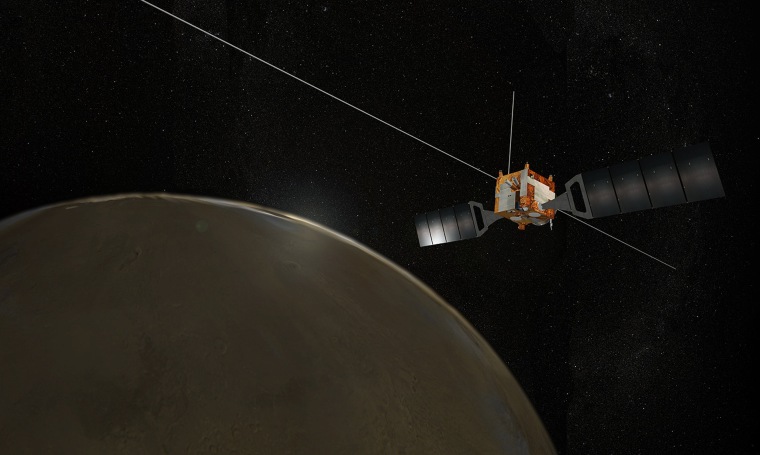The existence of liquid water on Mars — one of the more hotly debated matters about our cold, red neighbor — is looking increasingly likely.
New research published Monday in the journal Nature Astronomy indicates that there really is a buried reservoir of super salty water near the south pole. Scientists say such a lake would significantly improve the likelihood that Mars just might harbor microscopic life of its own.
Some scientists remain unconvinced that what's been seen is liquid water, but the latest study adds weight to a tentative 2018 finding from radar maps of the planet's crust made by the Mars Express robot orbiter.
That research suggested that an underground "lake" of liquid water had pooled beneath frozen layers of sediment near the south pole — akin to the subglacial lakes detected beneath the Antarctic and Greenland ice sheets on Earth.

Earth's subglacial lakes are teeming with bacterial life, and similar life might survive in liquid reservoirs on Mars, scientists have speculated.
"We are much more confident now," said Elena Pettinelli, a professor of geophysics at Roma Tre University in Italy, who led the latest research and the earlier study. "We did many more observations, and we processed the data completely differently."
Pettinelli and her team processed 134 observations of the region near the south pole with ground-penetrating radar from the Mars Express orbiter from 2012 to 2019, more than four times as many as before, covering a period of time more than twice as long.
They then applied a new technique to the observation data that has been used to find lakes beneath the Antarctic ice sheet, as well as an older technique used in the 2018 study.
Both methods indicate that there is a "patchwork" of buried reservoirs of liquid in the region, Pettinelli said — a large reservoir about 15 miles across, surrounded by several smaller patches up to 6 miles across.
The researchers can't tell how deep the reservoirs go, but they begin about a mile below the surface, she said.

And while the radar doesn't show what they're made of, they are probably "hypersaline" solutions — water saturated with perchlorate salts of calcium, magnesium, sodium and potassium — that keep them liquid at minus 90 degrees Fahrenheit and below, Pettinelli said.
The new study of a potential underground niche for life on Mars comes just a few weeks after scientists reported finding potential signs of life in the clouds of Venus.
If there really are buried bodies of liquid water, they might be a prime spot where microbial alien life could survive on Mars, perhaps a remnant of the life that might have existed there billions of years ago if Mars had seas of water on its surface.
Liquid water is a key ingredient for life as we know it, although exotic chemistries for life based on hydrocarbons or carbon dioxide have also been proposed.
Mars is now thought to be bone dry, but moisture in its atmosphere freezes during Martian winters as water ice above the permanent carbon dioxide ice caps at the north and south poles.
If the discovery is verified, it would be the first time liquid water has been found on Mars, and it would have a profound impact on the search for extraterrestrial life.
Steve Clifford of the Planetary Science Institute, a nonprofit based in Tucson, Arizona, said he agrees that an underground body of water is the most plausible explanation for the radar observations by Mars Express, but he argued that it might not be as cold or as salty as the researchers suggest.
Clifford, who worked on the Mars Express mission but wasn't involved in the new study, said he thinks the underground liquid could be created by heat from the planet's hot interior melting the icy sediments in the same way that geothermal heat melts the base of the Antarctic ice sheet in some regions.

That would mean that the underground reservoirs on Mars needn't be extremely salty to stay liquid, he said.
Not everyone is convinced by the new study, however.
Planetary scientist Jack Holt of the University of Arizona's Lunar and Planetary Laboratory in Tucson said in an email that Mars was probably much too cold for even hypersaline water to exist as a liquid and that if it did, then liquid water would also exist in regions that looked the same in the radar maps.
"If we apply the same interpretation, then there should be springs flowing out along the edge of the polar cap," he said. "And that is not the case."
Holt works with radar on the Mars Reconnaissance Orbiter, which has seen no signs of liquid water. The Mars Express researchers suggest that it is using the wrong radar wavelengths to see them.
Holt also said any description of buried "lakes" of water is misleading: "At best, patchy wet sediment," he said. "But even that is a stretch."
